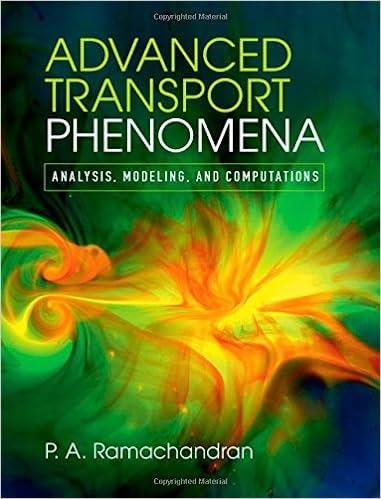The case of flow past a cylinder of infinite length normal to the axis was also studied
Question:
The case of flow past a cylinder of infinite length normal to the axis was also studied by Stokes. In view of the 2D nature of the problem, it is more convenient to work in \(r, \theta\) coordinates. The governing equation is \(abla^{4} \psi=0\).
What are the boundary conditions that can be imposed on \(\psi\) ? Assume that the far-field approach velocity is a constant.
In view of the far-field condition, the following solution looks reasonable:
\[\psi=v_{\infty}\left(\frac{A}{r}+B r+C r \ln r\right) \sin \theta\]
Try fitting the constants, and show that a uniformly valid solution cannot be obtained. (This is called the Stokes paradox.)
Fantastic news! We've Found the answer you've been seeking!
Step by Step Answer:
Related Book For 

Advanced Transport Phenomena Analysis Modeling And Computations
ISBN: 9780521762618
1st Edition
Authors: P. A. Ramachandran
Question Posted:





